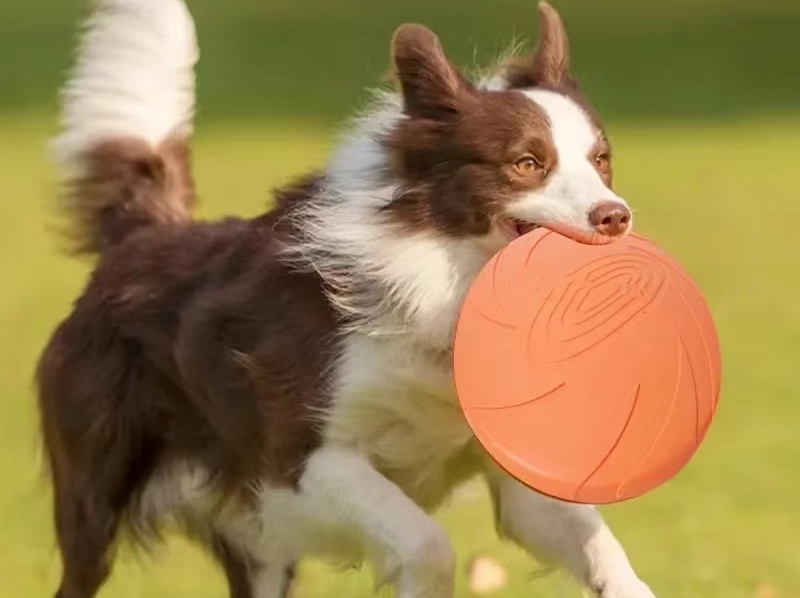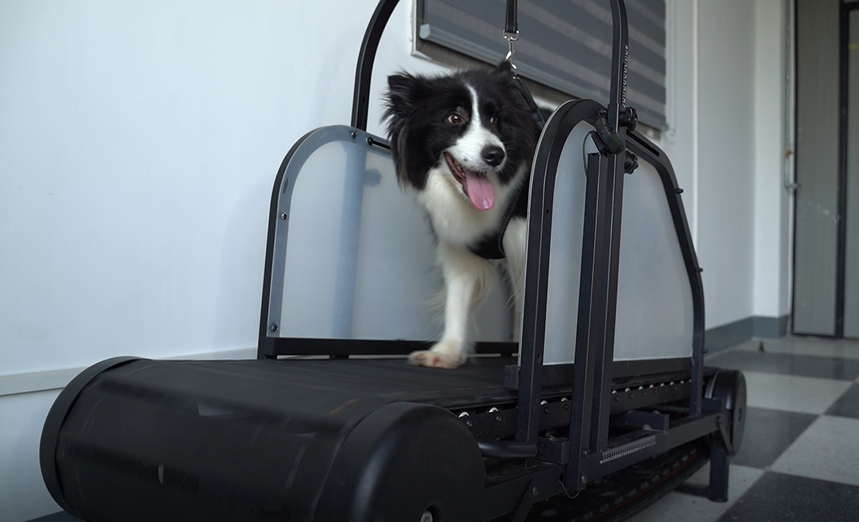Walking your dog is a great way to bond, but it might not be enough to meet their exercise needs. Dogs thrive on activities tailored to their breed, age, and energy levels. High-energy breeds love running or agility drills, while working breeds enjoy tasks that challenge their minds and bodies. Puppies need short bursts of play, and senior dogs benefit from low-impact activities. If you’re wondering, "Is walking my dog enough exercise?" the answer often depends on your dog’s unique requirements. For some, a leisurely walk won’t cut it. Tools like a non-motorized dog running machine can help provide the extra activity they crave.
Key Takeaways
- Walking might not be enough for your dog's exercise. Choose activities based on their breed, age, and energy to keep them healthy.
- Add harder activities like running or agility for active dogs. Try tools like a treadmill to exercise indoors.
- Keeping their mind busy is important. Play games, train, and let them meet other dogs to avoid boredom.
Is Walking My Dog Enough Exercise?
1. Why Breed Matters
Not all dogs are created equal when it comes to exercise needs. Some breeds are content with minimal activity, while others demand intense physical and mental stimulation. For example, flat-faced breeds like Bulldogs or Pugs have limited stamina due to breathing constraints, so regular walks may suffice. On the other hand, high-energy breeds like Border Collies or Australian Cattle Dogs thrive on activities like agility training or endurance sports. Here's a quick breakdown of how different breeds vary in their exercise requirements:

If you own a high-energy breed, you might find yourself asking, "Is walking my dog enough exercise?" For these dogs, the answer is often no. Incorporating tools like doggo treadmills can help meet their higher activity demands.

2. The Role of Age and Energy Levels
Your dog's age plays a huge role in determining how much exercise they need. Puppies, for instance, require short bursts of activity—about five minutes per month of age, twice a day. This helps them burn energy without stressing their developing joints. Adult dogs, depending on their energy levels, need a mix of physical and mental stimulation. High-energy adults may benefit from structured play or advanced training sessions. Senior dogs, on the other hand, thrive on low-impact activities like swimming or gentle walks. Shorter, more frequent sessions work best for older dogs to accommodate their health needs.
So, how often should you walk your dog? It depends on their age and energy level. For some, regular walks might be enough. For others, you’ll need to mix in additional activities to keep them happy and healthy.
3. Limited Physical and Mental Benefits of Walking
Walking your dog is a great start, but it doesn’t always provide the full range of benefits they need. Physically, walking offers low-intensity exercise, which might not be enough for high-energy breeds. Mentally, it can become repetitive, leaving your dog bored and under-stimulated. Dogs like Siberian Huskies or Dalmatians, for example, require vigorous activities like running or agility sports to stay engaged.
If you’re wondering, "How often should I walk my dog?" consider their mental health too. Games like fetch, puzzle toys, or even treadmill sessions can add variety to their routine. These activities challenge their minds and bodies, ensuring they stay sharp and satisfied. While dog walking is essential, it’s just one piece of the puzzle for a well-rounded exercise plan.
Consequences of Insufficient Exercise
1. Behavioral Problems in Dogs
When your dog doesn’t get enough exercise, you might notice some unwanted behaviors creeping in. Dogs are naturally active and curious, so a lack of activity can lead to frustration and boredom. This often results in destructive behavior like chewing on furniture, scratching doors, or digging up your yard. Some dogs may even become hyperactive, jumping on people or barking excessively to release pent-up energy.
On the flip side, some dogs react differently. They might withdraw, becoming less engaged with you and their surroundings. This can make them seem sad or even depressed. Without daily exercise, your dog might also develop stiffness in their joints, especially as they age. Providing enough outlets for their energy, like structured play or even a non-motorized treadmill session, can help prevent these behavior problems and keep your pup happy.
2. Health Risks of Inadequate Activity
A sedentary lifestyle can take a toll on your dog’s health. Without enough exercise, dogs are more likely to gain weight, which increases their risk of obesity-related issues like diabetes or heart disease. Lack of movement can also lead to muscle loss and joint problems, especially in older dogs.
Regular activity, even something as simple as a brisk walk or a game of fetch, helps maintain a healthy weight and keeps their joints flexible. For high-energy breeds, adding activities like agility training or workouts on a dog treadmill for large dogs can make a big difference. Keeping your dog active isn’t just about burning calories—it’s about ensuring their long-term health and mobility.
3. Emotional Well-Being and Quality of Life
Exercise isn’t just about physical health; it’s also key to your dog’s emotional well-being. Dogs that don’t get enough exercise often feel anxious or stressed, which can lead to undesirable behaviors. Regular activity helps them release that stress, leaving them calmer and more content.
Beyond that, exercise strengthens the bond between you and your dog. Whether it’s a walk around the block or a fun game of tug-of-war, these moments of connection make your dog feel loved and secure. A well-exercised dog is not only healthier but also happier, with a better overall quality of life. By incorporating a mix of physical and mental activities into their routine, you’re giving them the best chance at a fulfilling life.
Alternatives to Walking Your Dog
1. High-Intensity Physical Activities
Sometimes, walking your dog just doesn’t burn off all that pent-up energy. High-intensity activities like running, hiking, or agility training can help your dog release that extra energy while staying fit. If you have a high-energy breed like a Border Collie or a Labrador Retriever, these activities are perfect. You can even try a non-motorized treadmill, like the ronzeil, to give your dog a safe and controlled way to run indoors. This is especially helpful when the weather isn’t ideal for outdoor exercise.
For dogs that love to chase, games like fetch or frisbee are excellent options. These activities combine physical and mental stimulation, keeping your dog engaged and happy. Remember to tailor the intensity of the activity to your dog’s age, breed, and health. Puppies and senior dogs may need gentler options, while adult dogs can handle more vigorous exercises.
2. Mental Stimulation Through Games and Training
Physical exercise is important, but mental stimulation is just as crucial for your dog’s well-being. Games like hide and seek or treasure hunts challenge your dog’s senses and problem-solving skills. Puzzle feeders are another great option, turning mealtime into a fun and engaging activity. If you have space, setting up a small obstacle course can combine physical activity with mental challenges.
Training sessions also play a big role in keeping your dog’s mind sharp. Teaching new commands or tricks stimulates their cognitive functions and helps reduce pent-up energy. Regular training provides structure and predictability, which can lower anxiety and prevent destructive behaviors. Plus, it’s a great way to bond with your dog while keeping them mentally active.
3. Socialization and Structured Playtime
Socialization is a key part of your dog’s overall exercise routine. Regular walks expose your dog to new sights, sounds, and smells, which are essential for their mental stimulation. But structured playtime with other dogs takes it a step further. It helps your dog learn appropriate behaviors and builds their confidence.
If you have a puppy, socialization is even more critical. Playdates or trips to the dog park allow them to interact with other dogs and people, shaping their behavior for the future. For older dogs, these interactions can prevent anxiety or aggression. Whether it’s a twenty-minute walk or a play session, socialization ensures your dog stays well-rounded and happy.
Walking your dog is important, but it’s just one piece of the puzzle. A mix of physical and mental exercises can transform your dog’s health and happiness:
- Mental activities reduce stress and prevent boredom.
- Physical exercise, like using a ronzeil non-motorized treadmill, keeps them fit and balanced.
Tailor their routine to their unique needs for a truly happy pup.

FAQ
1. How can I tell if my dog needs more exercise?
Look for signs like restlessness, destructive behavior, or weight gain. If your dog seems bored or hyperactive, they likely need more physical or mental stimulation.
2. Is the ronzeil non-motorized treadmill safe for all dogs?
Yes, it’s safe when used correctly. Start slow and supervise your dog. Adjust the pace to match their comfort level, especially for puppies or senior dogs.
Tip: Introduce the treadmill gradually. Use treats or toys to make it a positive experience for your dog.
3. How often should I use the ronzeil treadmill for my dog?
Use it 2-3 times a week for 10-15 minutes per session. Adjust based on your dog’s energy level, age, and breed-specific exercise needs.










0 Comments